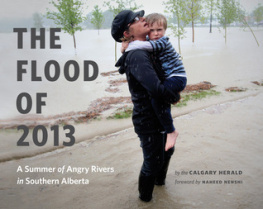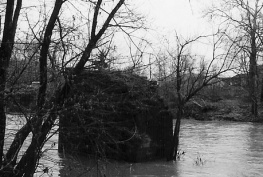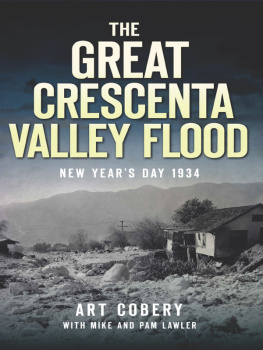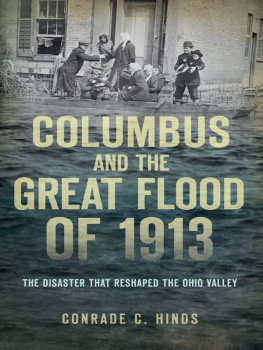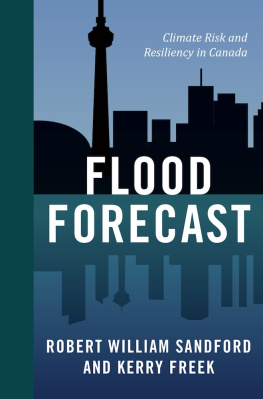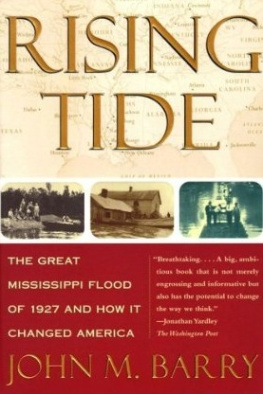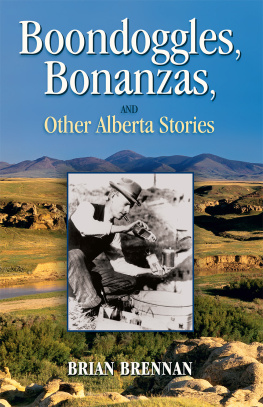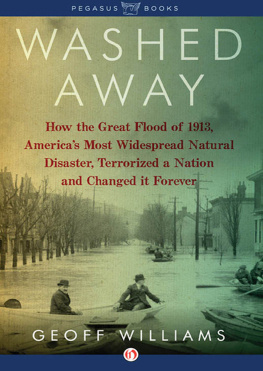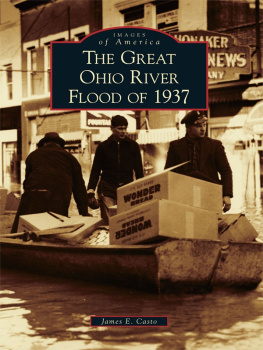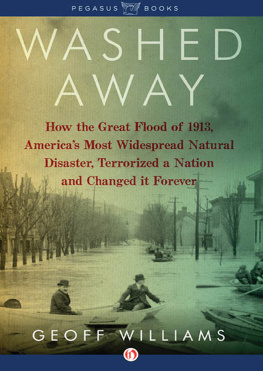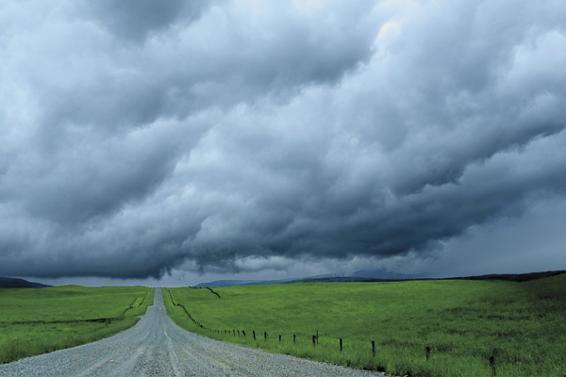
Storm clouds gathered near Waterton Lakes National Park on June 19, 2013, ushering in an intense rainstorm that hammered southern parts of the province the following day. Some areas of southern Alberta received more than 150 millimetres of rain in a twenty-four-hour period.
(Leah Hennel/Calgary Herald)
Copyright 2013 by the Calgary Herald
Foreword copyright 2013 by Naheed Nenshi
All rights reserved. No part of this book may be reproduced, stored in a retrieval system or transmitted, in any form or by any means, without the prior written consent of the publisher or a licence from The Canadian Copyright Licensing Agency (Access Copyright). For a copyright licence, visit www.accesscopyright.ca or call toll free to 1-800-893-5777.
Greystone Books Ltd.
www.greystonebooks.com
Cataloguing data available from Library and Archives Canada
ISBN 978-1-77164-030-5 (cloth)
ISBN 978-1-77164-034-3 (epub/pdf)
Edited and compiled by Monica Zurowski, Michele Jarvie, Chris Varcoe, Norma Marr, Lorne Motley, Debbie Penno, Ted Rhodes, Darren Francey, Tony Seskus and Valerie Fortney
Editing by Shirarose Wilensky
Jacket design by Naomi MacDougall
Photography by Colleen De Neve, Stuart Gradon, Leah Hennel, Lorraine Hjalte, Tijana Martin, Ted Rhodes, Christina Ryan and Gavin Young of the Calgary Herald; Craig Douce of the Rocky Mountain Outlook; and David Moll.
For a full list of contributors, please see .
We gratefully acknowledge the financial support of the Canada Council for the Arts, the British Columbia Arts Council, the Province of British Columbia through the Book Publishing Tax Credit and the Government of Canada through the Canada Book Fund for our publishing activities.
FRONT JACKET PHOTOGRAPH: A woman holds a young boy as they wait to place him on a combine that was being used to evacuate people stranded at the Co-op supermarket on 12 Avenue SE in High River, Alberta, on Thursday, June 20, 2013. (Stuart Gradon/Calgary Herald)
FOREWORD
By NAHEED NENSHI
WE WILL NEVER forget the summer of 2013.
There are images that are burned into my mind forever. Things I never thought I would see.
Some were awful.
I saw the Bow and Elbow Riversthose rivers that run in the bloodstream of every Calgarianrun higher and faster and angrier than ever before.
I saw neighbourhoods under water and property ruined.
I saw broken streets and bridges and hearts.
But I also saw so much goodness. I saw the best of the human spirit. And I saw the best of public service.
I was out of town when it became clear I would need to authorize a local state of emergency. After managing the situation by phone in the early hours, I arrived back in Calgary late that evening. After an on-the-ground briefing, I needed to see our city.
Tha night, I drove with an incredibly patient and understanding police officer through the city. It was dark and quiet, most of the evacuations having been completedthe calm before the storm as we waited for the rivers to crest.
I held my breath watching the Bow River nearly touch the bottom of the Langevin Bridge. Even in the police vehicle, we could not enter large parts of Bowness that were already under water. And I knew from pictures and news reports of the pain and damage upstream and downstreamin Canmore and Bragg Creek, on the Siksika First Nation and in High River.
I spoke with incredibly tired guys who described themselves as labourers and were furiously bailing out the Glenmore water treatment plant to keep it, and our water supply, safe.
I met police officers, in the twentieth hour of their shift, who were evacuating senior citizens in the middle of the night. There was a language barrier, people were scared and confused, and it would have been very easy for the whole situation to have gone very badly very quickly. But my police colleagues treated those citizens with such professionalism, care and love that I knew at that moment we were going to be okay.
And in the ensuing days, I continued to see public service at its best. Colleagues at the waste water treatment plant who waded into the dark, fast water with pitchforks to save their plant. Folks who drove monster garbage trucks up and down streets to restore a bit of normalcy. Colleagues building a new road in one day and returning the CTrain to service in unbelievable time. Were blessed to have them all.

LEFT Mayor Naheed Nenshi joined the 2013 Calgary Stampede parade, which miraculously happened just two weeks after the flood.
RIGHT Mayor Nenshi addressed the crowd at the Alberta Flood Aid benefit concert at McMahon Stadium.
Certainly, I also thank the federal and provincial public servantsincluding full-time and reserve members of the Canadian Forcesfor all they did and continue to do.
The most enduring image of the flood, though, is that of the ordinary citizencovered head to toe with mud and mosquito bites, cut and scraped and bruisedworking hard to save the home of someone she doesnt even know.
Every one of us figured out how to use our own hands, hearts and minds to help our neighbours.
Why? Because its what we do.
Im knocked to my knees every time I think about that sign in Bowness put up by a family that had their home completely gutted. We lost some stuff; we gained a community. This story repeats, hundreds and thousands of times, across the city and the province.
I once asked a volunteer if she was affected by the flood.
I live in Forest Lawn, she told me. My neighbourhood didnt see any water. My basement is dry. But, Mayor, we were all affected by the flood.
We did a good job of rebuilding quickly. Its almost unbelievable that we had the Stampede, that we enjoyed the Folk Festival. But much remains to be done, in Calgary and around southern Alberta. So thanks to the Calgary Herald for putting together this book and giving people another chance to help.
The floods reinforced that we, as a community, can do amazing things. That we can show so much compassion and give so much of our resources to friends and neighbours, whether we know them or not. We, as Calgarians and southern Albertans, should be proud of what we have accomplished together.
Because its what we do.
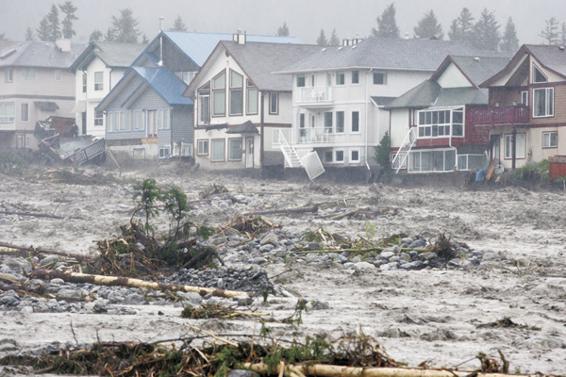
As the rain came down, the water flowing into rivers and creeks throughout southern Alberta surged. In Canmore, homes along Cougar Creek were battered by flash flooding on the morning of June 20. Trampolines, wooden decks and logs floated down the raging creek, and homes were left teetering along its widening banks.
(Craig Douce/Rocky Mountain Outlook)
/ THE RAGING WATERS
Compiled by TONY SESKUS
CALGARYS CONNECTION WITH the water is both old and deep. The citys very origins can be traced to the confluence of two riversthe Bow and Elbowwhich have carved ancient, mea-ndering channels from the Rocky Mountains to the foothills and out to the boundless Canadian Prairies. Since 1875, generations of Calgarianswhether they were living in a lonely Mountie outpost, a pioneer town or a bustling cityhave long depended on the rivers for life, leisure and commerce. Its a shared dependence across southern Alberta, where early settlers established thriving communities such as High River, Canmore and Medicine Hat alongside such vital tributaries.

